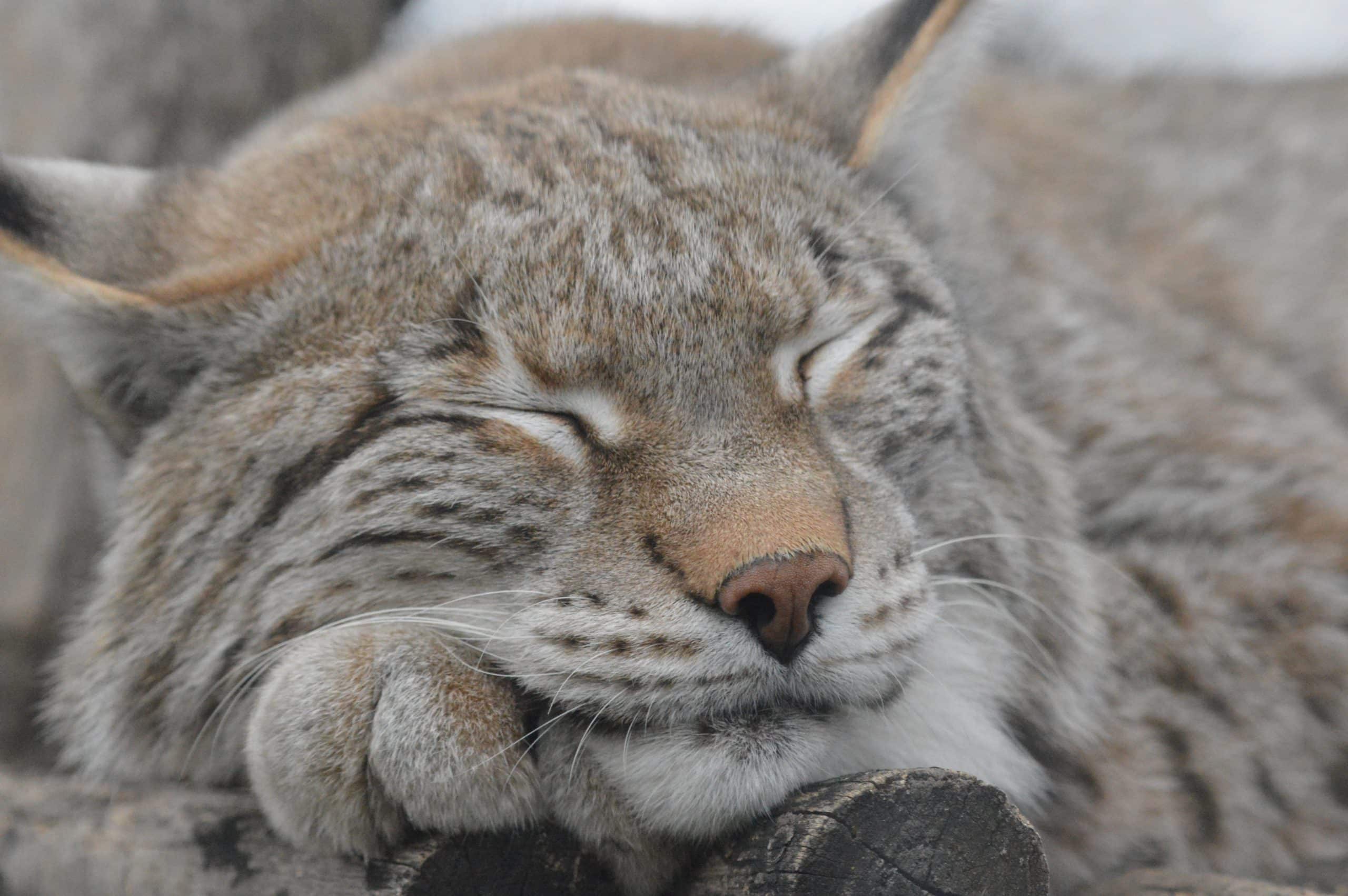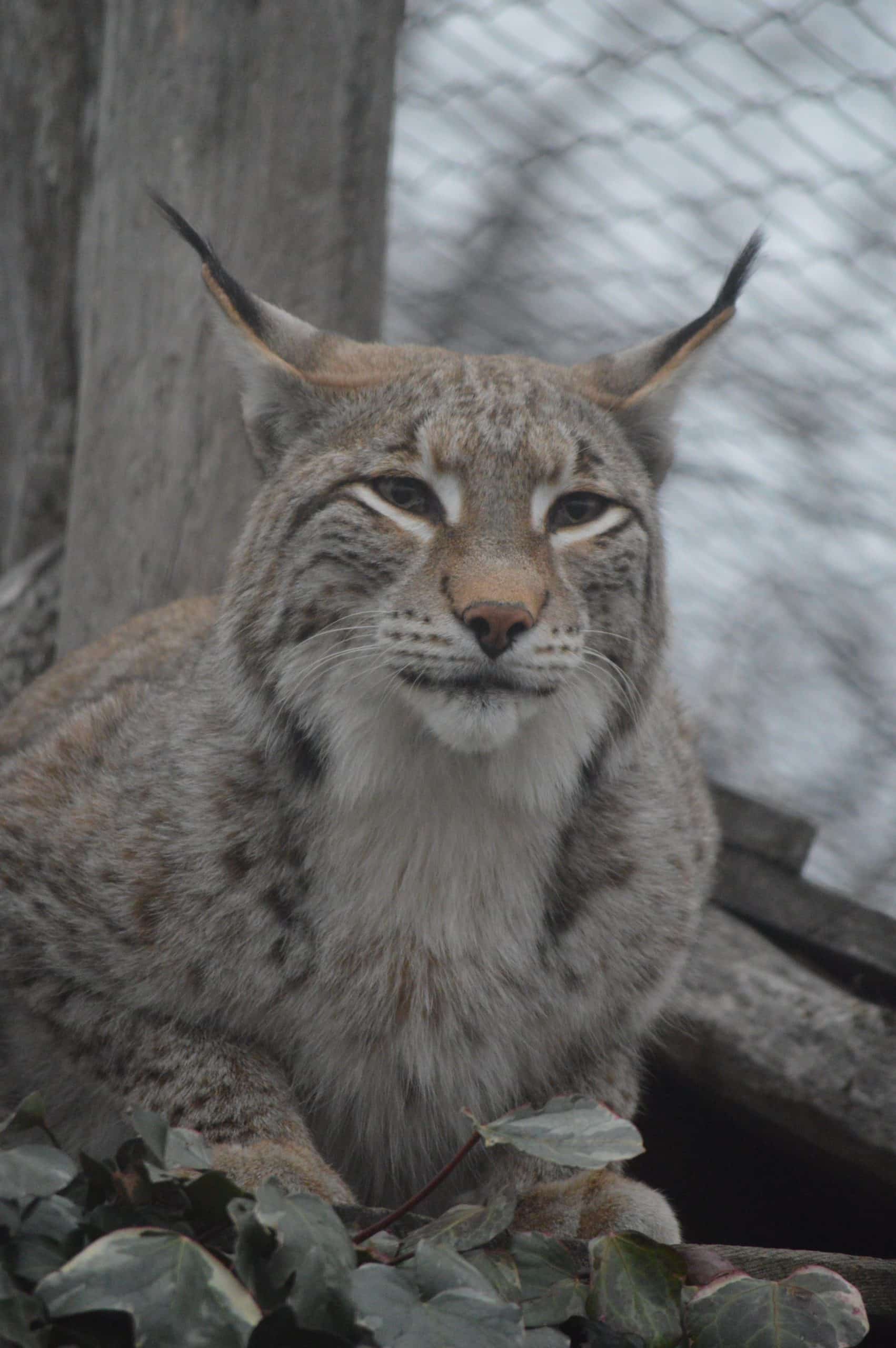The coloration is very diverse, but in general it can be said that the further north the lynx lives, the lighter its fur, so that it can be best camouflaged in the snowy landscape. The base color ranges from pale yellow to reddish yellow with prominent dark brown spots and a longitudinal stripe on the back. These spots can be different depending on the origin of the lynx. In winter, the fur is thicker, turns more gray and the dark spots lose their visibility. The belly is clearly lighter to white.
All features are characterized by triangular ears with black hairs on their tips and also a black end of the tail.
It has very wide and round paws. When the lynx molts in autumn, thick, long fur grows on its paws, serving as snowshoes, which help it to wade through the snow, thereby conserving hard-earned energy in searching for and chasing prey. This hairiness on the bottoms of the paws not only makes it easier for the lynx to move in loose snow, but also acts as an anti-slip on slippery icy surfaces. Also thanks to this, the lynx has a higher chance of catching up with potential prey, which is not as well equipped for slippery terrain as the lynx.
He lives alone most of the year. Only during the mating season does the male stay with the female, leaving his territory. During this period, the female is sometimes accompanied by several males who fight together.
Cubs come into the world covered with fine fur, blind and completely dependent on their mother’s care. They open their eyes after two weeks and do not leave the den for their first wanderings until five weeks after birth. The mother breastfeeds them for about two to three months, although they start eating meat at the age of 30 days. They leave their mother at about one year of age, when they are already able to hunt for food on their own.
Although the lynx is a very fast animal, healthy game usually escapes them. In nature, it has a regulatory role – its prey is usually injured, sick and weakened individuals, i.e. also old individuals and young ones.
It therefore affects the health status of especially big game.
He buries his excrement, he just doesn’t bury it at the edges of the territory because it serves as a boundary marker.
The lynx is the largest European feline, but it has already been exterminated in most of Europe due to constant persecution.
In his district, we will not meet either a fox or a wild cat.
It follows its paths quite precisely and in one night it can cover up to 20 km of the route in pursuit of its prey.
The lynx is truly insular – in daylight it can spot a mouse at a distance of 70 meters, a hare at 300 meters and a roe deer at 500 meters. His vision is excellent even at night. In summer, during the full moon, he can spot, for example, a hare at 125 m and a roe deer at 300 m.
He is a very good swimmer and an excellent tree climber.
The lynx is able to jump from a place up to a height of two meters. In this way, he hunts partridges or pheasants that try to escape by taking off.





